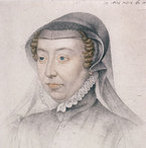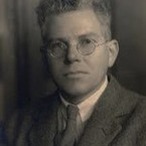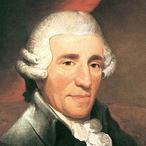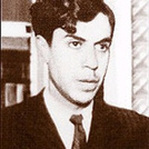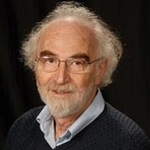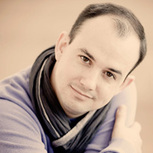|
As I left the office, I could think of nothing better than to sit in the opulent surroundings of the Wigmore Hall, with beautiful music and equally beautiful strawberry ice-cream at the interval, and let all my cares drift away. So, aware only that I was going to hear Czech mezzo Magdalena Kožená, (my ticket was given to me by my good friend, who had unfortunately double booked) I trotted down to the Wiggy in blissful ignorance of what I would be experiencing. I was pleasantly surprised to find that I would be hearing a series of Madrigals and orchestral pieces from the 16th and 17th centuries. The concert featured music from Kožená's 2010 album Lettere Amorose, produced in collaboration with the ensemble Private Musicke, which takes its name from a collection of consort music by English composer Martin Peerson. Founded in 1998 by Pierre Pitzl, who plays guitar and is also the director, Private Musicke consists of Hugh Sandilands (guitar), Daniel Pilz (colascione), Jesús Fernández Baena (theorbo), Margaret Köll (harp), Brigitte Gasser (lira da gamba), and Richard Myron (violone), David Mayoral (percussion). They have quite a few recordings of early music under their belt, and are experienced concert performers. Anyway, back to the performance. There was to be no interval (shattering my dreams of a nice tub of strawberry ice-cream!), so I really hoped that what was on offer was enough to keep me entertained for a couple of hours: I was not disappointed. The concert started with Pierre Pitzl walking nonchalantly onstage, playing his guitar. Next, as if oblivious she was at a concert, came Kožená: her blond hair pulled back, wearing a striking sleeveless, knee-length red dress, and barefoot! As she sang, more of the ensemble came onstage: the whole effect was more like a jam session than a concert. The first aria, by composer Filippo VItali, was "O bei lumi", had a beautifully lilting melody handled tenderly by Pitzl, and sung powerfully and emotively by Kožená. The second composer represented was Sigismondo d'India, an enigmatic composer from Palermo, Sicily. Little is known about his life, his birth date for instance is unknown. In a document from Turin, MS qm. IV. 41 (containing the music for d'India's music for Zalizura), it is stated that he was born in 1562 and died in 1630. Nigel Fortune thinks this unlikely as "they happen to be the dates of birth and death of Charles Emmanuel I. Duke of Savoy, in whose service d'India spent twelve years of his life."1 It is probably safer to assume that he was born in or after 1580. He entered the Duke's service in 1611, and most of his music dates from his time in Turin. Kožená presented us with three pieces by d'India, the most represented composer in the concert. The first was "Cruda Amarilli", with its heartfelt cries and strange, regal-like accompaniment by the lira da gamba. It reminded me of a particularly emotional accompanied recitative. The second piece was "Torna il serena Zefiro". Here Kožená moved between an almost soubrette/countertenor sound and a more smoky mezzo to emphasise the changes in imagery. Her wonderful urgency on the repeated line at the end of second and fourth verses, "Primavera per me non sara mai", gave more form to the aria than that exhibited by "Cruda Amarilli". The last piece, "Ma ché? Squallido e oscuro", again accompanied by the otherworldly lira da gamba, saves its punch for the penultimate word, "esangui", with its long, slow, rising scale, and its descending step-bass on the violone. One of the founders of the opera genre, Giulio Caccini most deservedly has a place in this excellent program. Discovered by Francesco de' Medici in the 1560's, Caccini was singing at the Medici court from the late 1570's. He was a Tenor who was also an accomplished lute player. He was able to accompany himself as he sang. Also famous as a teacher, Caccini trained the castrato Giovanni Gualberto Magli, who took the roles of La Musica and Prosperina in Monteverdi's Orfeo. The aria performed here was "Odi, Euterpe", a very upbeat piece which contrasted nicely with the more angst-ridden offerings. Kožená and the ensemble were excellent in this piece, which had more than a few of the audience tapping away and "conducting" ferociously in the air (this must be the upper class version of playing the air guitar!). Tarquinio Merula, an Italian composer who spent time at the court of Sigismund III, King of Poland, from about 1624 to 1628, has two contrasting arias showcased here. The first, "Conzonetta spirituale", is a lullaby sung by the Virgin Mary to the baby Jesus. The moving, mellifluous melody rises and falls over two constantly repeated chords. With nowhere to hide, the diction, interpretation and technique of the singer are starkly on show. Kožená uses all her skill to highlight the subtle nuances in the text and rhythm, while taking great pains to modify the volume in direct relation to the text. The second aria, "Folle è ben si crede", is much lighter, and less oppressive. Kožená treats the beautiful triplet movement at the penultimate line of each stanza exquisitely, and it is this 'release point' which makes the whole aria so beautiful. My three favourite composers were Strozzi, Kapsberger and Monteverdi. The aria from Stozzi was instantly recognisable as one from the great female composer. She was born the illegitimate daughter of Giulio Strozzi and his servant, Isabella Garzon. She was adopted and baptised into the Strozzi family. She was not only a prolific composer, but an accomplished singer too, and her father took pains to make sure his daughter's talents were developed. Strozzi's works were often full of yearning and heartache, and "L'eraclito amoroso" is no exception. Kožená really gets into the text in this aria, feeling the emotions and vividly projecting them to the audience. The mezzo's smoky darkness comes to the fore in this piece, making it all the more poignant. Johannes Hieronymun Kapsberger, represented by two arias in the concert, was in the service of Cardinal Francesco Barberini for over 20 years. Before that, he had set up academies in his house, in Rome which were very well known and respected. He could be a bit of a hit-and-miss composer: the first aria, "Aurilla mia", is an example of this. The second aria of the performance, however, "Felici gl'animi" is superbe. With the orchestration by Private Musicke, and the treatment of the melodic line by Kožená, the piece could pass as modern latin-themed music: yet another 'foot-tapper' for us in the audience to 'air-conduct' along to. I noticed a few of the audience suppressing the urge to clap along. The last of the composers performed with Kožená was Claudio Monteverdi. Often seen as a transitional figure between the Renaissance and the Baroque periods, Monteverdi is, in my opinion, one of the great musical giants, along with Bach, Beethoven, Wagner, Stravinsky, and Scriabin. The first aria was the famous "Si Dolce È Il Tormento". Placed high in the range, the tessitura was no problem for her, as she moved between bright, shining soprano, and dark, husky mezzo at the end of each phrase. Interestingly, I have only ever heard this piece performed by a man, so to have a female interpretation was a nice contrast. It worked very well. The final piece, "Quel sguaro sdegnosetto", was masterfully performed, and earned a rousing applause. The other pieces were all performed by Private Musicke without Kožená. The improvisation on Luis de Briçeño's "Caravanda Ciacona" was truly amazing, and is something I will not forget. I was tempted to go to the repeat concert on the Friday just to hear this again. Luckily I now have the album, but the 'jam-session' atmosphere at the Wiggy just can't be recreated without those marvellous musicians. It was so modern, so up-to-date, yet so obviously from another time, that it was difficult to know which period you were in. To be honest, I ended up thinking "to hell with it" and just enjoyed the music. A plea to Private Music: The version on the CD is far too short; please release another version (perhaps a live performance?) which we can enjoy over and over again! The next orchestral piece was again an improvisation, this time Gaspar Sanz's "Canarios". Imagine a warm summer night on the beach in southern Spain, away from all the English tourists, with a few young lovers around, all enjoying the dying light dancing on the breaking waves. If I were to describe it in visual terms, that's what the music evoked in me. It was vibrant, vital, and possibly even vivacious! Giovanni Paolo Foscarini's "Ciaccona" was more like getting up early in the morning, as the sun rises over the horizon, jumping into an expensive open-topped sports car, and driving off towards something new and exciting. I know theses descriptions are a little strange, but the ensemble's treatment of these wonderful pieces really brought out some lovely imagery when I heard them, so I thought I'd share them with you all. The other three pieces, Giovanni Paolo Foscarini's "Passamezzo", Giovanni de Macque's "Capriccio stravagante", and Lucas Ruiz de Ribayaz's "Espanoletas" were all charming in their own way, and extremely well played, but the three prevously mentioned pieces were in a different league. So, what's the score? Well, in case you haven't guessed already, I thought it was an excellent concert. It was nice to hear these arias performed by a singer with a full bodied, powerfully emotive voice, rather than a vibrato-less, insipid purity, which I feel does more damage to the genre, and relegates it further into the forgotten outhouse of musical history. Kožená made these pieces real, and made the feelings described in them real. I do hope I get to hear Private Musicke again live, as this concert was a revelation to me. I am so glad I was lucky enough to get this ticket. I probably wouldn't have given the program a second glance before: now, though, I'll be looking out for music like this in the future. 1. Sigismondo d'India. An Introduction to His Life and Works, Nigel Fortune, Proceedings of the Royal Musical Association, 81st Sess., (1954 - 1955), pp. 29
0 Comments
Your comment will be posted after it is approved.
Leave a Reply. |
Categories
All
Archives
September 2014
|
MOST VIEWED POSTS
© James Edward Hughes 2013
 RSS Feed
RSS Feed
